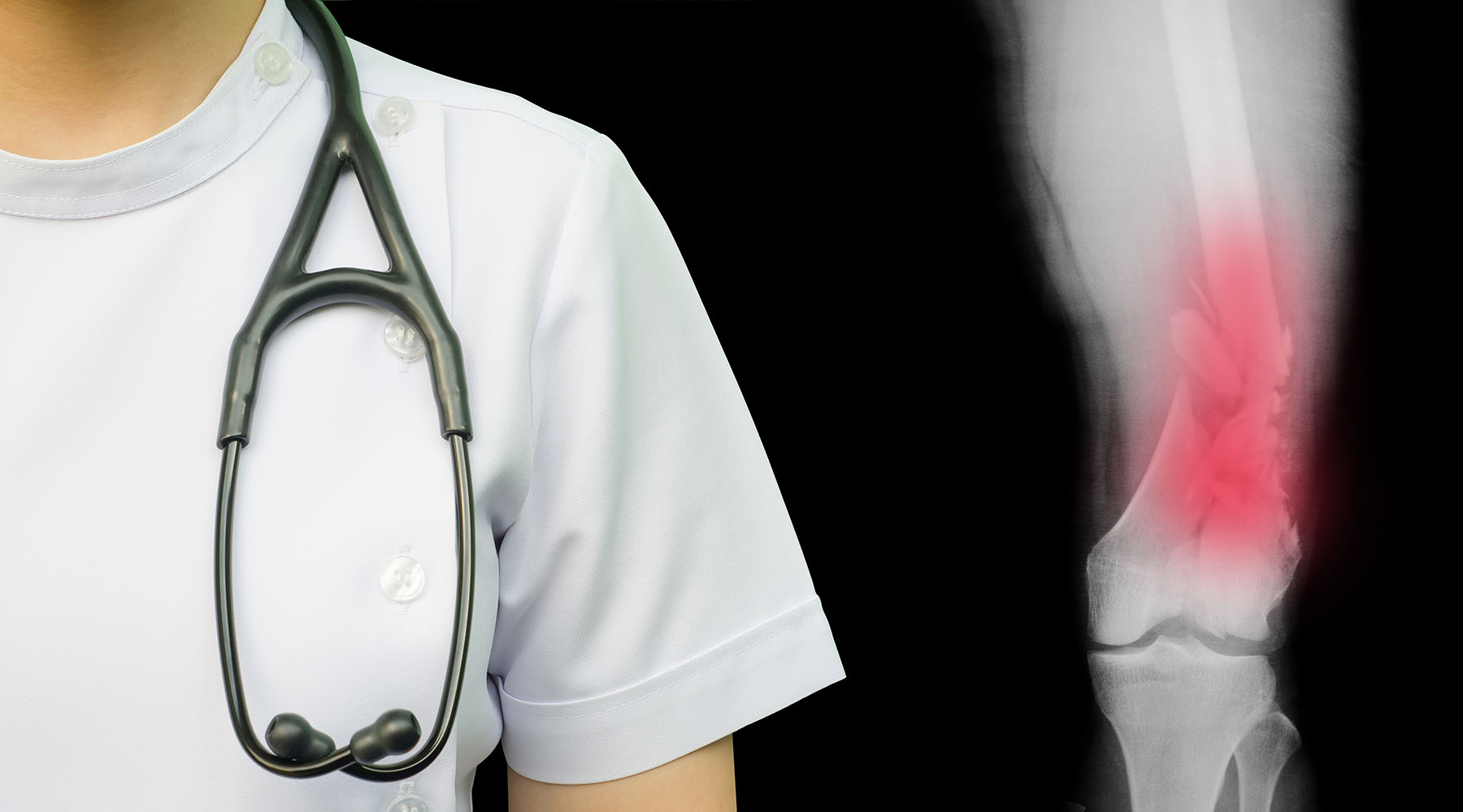Expert: What to Do Before Joint Replacement Surgery

The human body is an amazing creation. It takes us through many wonderful years of life.
As time passes, though, wear and tear can catch up with us. When the cartilage cushion between the bones in our joints wears thin, what was once effortless causes pain and limited range of motion. This condition, known as osteoarthritis, is one we typically see in older patients, but it can affect younger athletes and people who work in strenuous professions.
Obese individuals may also develop this condition earlier in life from the strain that extra weight places on their joints.
When a patient comes to me complaining of pain, stiffness, swelling, limited range of motion, or other arthritic symptoms, I first review all the potential treatment options available and answer their questions. I always leave joint replacement surgery as a last resort for treating the pain.
As it is an elective surgery, the patient always tells me whenever he or she is ready for surgery. This discussion is not me telling the patient what to do – it’s about knowing their options and making a shared decision.
If you don’t have end-stage osteoarthritis and radiograph (X-ray) images showing bone-on-bone contact, you are not yet a good candidate for surgery.
Getting a clear picture.
When a patient is experiencing chronic hip or knee pain, I order simple standing radiographs to visualize the space between the articulating bones at the joint. These images help me evaluate the condition of the joint and cartilage. I use this diagnostic tool to determine whether the patient will benefit from a joint replacement.
Easing the pain.
Conservative pain management is always the first step. Surgery is only considered after the patient has tried all the conservative approaches with no success.
To manage pain conservatively, I follow guidelines created by the American Academy of Orthopedic Surgeons, which are based on scientific research:
Anti-inflammatory medication.
Acetaminophen, ibuprofen, and other non-steroidal anti-inflammatory (NSAID) drugs are the first line of pain relief treatment. Prescription NSAIDs are stronger, last longer, and are easier for the stomach to tolerate than over-the-counter medications.
Prescription NSAIDs are a good option for people who don’t qualify for surgery and don’t want to use narcotics for pain relief. Narcotics can be highly addictive and may increase pain sensitivity, so they are best used only for acute pain.
Some people take glucosamine and chondroitin; however, there is no scientific evidence showing they relieve pain.
Physical therapy.
I prescribe physical therapy to strengthen the muscles around the joints and to protect the joints.
Proper exercise.
There’s a right and wrong way to exercise when you have osteoarthritis. The proper methods include swimming, cycling, gentle yoga, tai chi, proper weight training, and walking. The wrong workouts – running, aerobics, jumping, stair climbing, contact sports – put too much stress on the joints.
Weight loss.
Shedding excess pounds can significantly reduce joint pain.
Extra support.
I am not a fan of splinting or bracing the knee, as both decrease range of motion and muscular strength. Shoe insoles don’t help much, either. I tell patients to wear a neoprene sleeve or to use a cane or crutch to support the knee.
Anti-inflammatory diet.
Some people notice less pain when they avoid consuming foods and beverages that cause inflammation: sugar, highly processed or high-fat foods, red meat, soda, and alcoholic beverages. For some, following an anti-inflammatory diet that emphasizes vegetables, certain fruits, nuts, and seeds seems to help.
Lifestyle modifications.
We are always told to take the stairs, not the elevator, to improve fitness. Achy arthritic knees might disagree. To accommodate arthritic joints and age in place, some people move into a single-story dwelling or modify their home in ways that make activities of daily living easier.
TENS therapy.
A transcutaneous electrical nerve stimulation (TENS) device uses low-voltage electric currents to block or change your perception of pain. The currents are delivered through electrodes placed on the skin’s surface, at or near the nerves where the pain occurs.
Acupuncture.
This ancient form of Chinese medicine involves placing tiny thin needles at specific points on the body. Acupuncture stimulates the nerves, muscles, and connective tissue, which some experts believe triggers the body’s ability to alleviate pain.
Injections.
Some people experience three or more months of pain relief, reduced swelling, improved quality of life, and are more physically active after a cortisone injection. The injection doesn’t make collagen regrow, but it can control pain and delay surgery, especially in younger patients.
I limit cortisone injections to three a year; long-term use can damage the tissues and cause other side effects. Talk with your orthopedist if cortisone injections don’t work for you and you’re a healthy candidate for surgery.
Hyaluronic acid, which naturally occurs in the joints, is lubricating. You can boost your natural supply with an injection. In some cases, insurance covers these injections. The data on whether hyaluronic acid works or not is divided: 50% of the data shows it helps control pain; 50% indicates that it does not.
Stem cell therapy.
We don’t have significant data on plasma stem cells; half of the data shows it reduces inflammation and helps with pain; the other half says it doesn’t. For that reason, insurance doesn’t cover this therapy. Scientifically speaking, cortisone injections are the most tried and true method.
Is it time for surgery?
Even if you conscientiously follow the conservative measures mentioned here, osteoarthritis may increase your pain and limit your mobility. When you reach this stage, speak with your orthopedist to see if you’re a good candidate for joint replacement surgery.
During your discussion, make sure your expectations for life after surgery are realistic. You will not qualify for surgery if you smoke, have uncontrolled diabetes, or have a Body Mass Index (BMI) higher than 40.
When a patient is not a good surgical candidate, I may recommend radiofrequency ablation of the genicular nerves.
These are the nerves around the knee joint that carry pain and sensation signals from the joint to the brain. Ablation, which involves burning these nerve endings, helps with pain. It does not remove the pain completely; instead, it ‘turns down’ the pain a little.
Your sensation remains intact so that you’re aware when pain is harming your joint. Ablation is still somewhat controversial and is typically only used in patients who are not eligible for surgery.
Ultimately, I advise patients to wait as long as possible to have surgery, especially if they are under age 50.
By waiting, you have a better chance that your joint replacement will last the rest of your life without needing revision surgery.
A replacement joint has a life span of about 25 to 30 years, depending on your activity level.
When conservative pain management options fail, joint replacement surgery is a good way to improve your quality of life. Advances in technology, implant materials, and techniques allow surgeons to give you a near-perfect replacement joint. At UHealth, we are fortunate to have two robot-assisted surgery systems, which is unusual among South Florida hospitals.
We use these minimally invasive techniques for every joint replacement surgery. It’s exciting to have this technology now, and to see what is still under development.

Written by Jaime Carvajal, M.D., an orthopedic surgeon and expert in joint replacement surgery with a clinical focus on hip and knee replacement.
To make an appointment with a UHealth orthopaedic expert, call 305-243-3000.
Tags: conservative care, Dr. Jaime Carvajal, orthopedic care in Miami, orthpedic, surgical options, total hip replacement, total knee replacement
